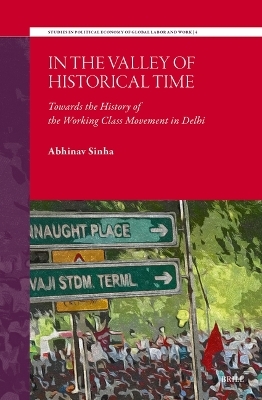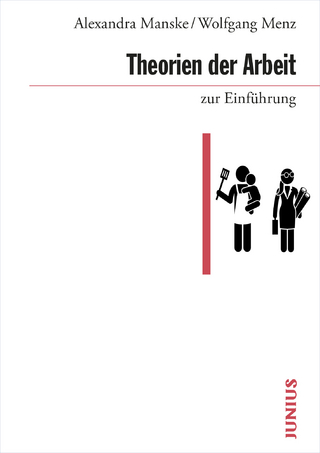
In the Valley of Historical Time
Brill (Verlag)
978-90-04-69348-7 (ISBN)
The descent of working class movements that began with neoliberal globalization is nearing completion. However, the ascent is yet to begin. This period is witnessing novel forms of organization and resistance. For students, activists and academics, it is imperative to understand changes in the modus operandi of capital since the 1970s to explain the crisis of conventional trade unionism, as well as the spontaneous outbursts of creativity in movements of informal workers in recent times. Delhi has been a centre of such innovative experiments. In the Valley of Historical Time attempts to understand these new forms and strategies and possibilities of resurgence of working class movements.
Abhinav Sinha is a Marxist theorist, historian and political activist based in New Delhi. He has written on problems of political economy, caste, fascism and working class movement. His recent books include Subversive Interventions (Rahul Foundation: 2019) and On the Caste Question: Towards a Marxist Understanding (Rahul Foundation: 2019).
Acknowledgments
List of Tables
Abbreviations
Glossary of Indian Terms
Introduction
1 On the Question of Methodology
1.1 The Question of Class and Identities
1.2 The Category of ‘Labouring Poor’: Some Preliminary Reflections
1.3 ‘Everyday Forms of Resistance’ and ‘Livelihood Strategies’: The Ticklish Question of Agency
1.4 The Question of the State
1.5 Plan of the Book
1.6 The Problem of Sources
2 The Trajectory of Indian Capitalist Development since Independence
2.1 Indian Capitalist Class: A short Comment on the Character
2.2 The Prehistory of Planning: Early Visions of Capitalist Development and the Bombay Plan
2.3 Post-Independence Economic Development – I: The Brief Transition (1947–1951)
2.4 Post-Independence Economic Development – II
2.4.1 Nehruvian “Socialism” (1951–1980): A Promise That Never Was
2.4.2 The Interregnum of the 1980s: Liberalization without Liberalization
2.4.3 New Economic Policy of 1991: The Opening of the Floodgates
2.5 Rise of Informal Economy and the Informal Working Class in India
3 Evolution of Delhi as an Industrial City
3.1 A Brief Note on the ‘Pre-history’ of Delhi as a Governmental, Economic and Commercial Centre
3.2 Emergence of Delhi as an Industrial and Urban Centre
3.3 Master Plans for Delhi: Exercises in the ‘Self-Discipline’ of Capital by the Capitalist State
3.3.1 The Master Plan of 1962
3.3.2 Second Master Plan 1990
3.4 Delhi as an Industrial and Commercial City through the Eyes of the Ethnographic State
4 Capital, Labour and the Evolution of Industrial Relations
4.1 Phases of Indian Capitalist Development and the Corresponding Shifts in Industrial Relations
4.1.1 Prehistory of the Development of Industrial Relations System in India: 1880s to 1946
4.1.2 First Phase: 1947 to the Mid-1960s
4.1.3 The Second Phase: 1965–1974
4.1.4 The Third Phase: 1975 to 1990
4.1.5 Fourth Phase: 1991 to 2014
4.2 The Changes in Industrial Relations as Reflected in Strikes, Lockouts and Mandays Lost
4.3 India’s Informal Sector and the Question of Industrial Relations
5 Delhi Textile Workers’ Movement: Origin, Rise and Decline, 1950s–1990s
5.1 The Origin of Delhi Textile Mills: A Brief Historical Note
5.2 Delhi Textile Workers’ Struggle: The Beginning
5.2.1 The Textile Workers’ Strike of 1955
5.2.2 The Case of Pehelwan Workers
5.2.3 The 1966 Strike of Delhi Textile Workers
5.3 Delhi Textile Workers’ Struggle: The Peak
5.3.1 Delhi Textile Workers’ Struggle: 1972 to 1979
5.3.2 Delhi Textile Workers’ Strike of 1979
5.4 Delhi Textile Workers’ Struggle: The Decline
5.4.1 Delhi Textile Workers’ Strike 1986 and the Process of Closure since the Mid-1980s
5.4.2 The Case of DCM Textile Mill Closure, 1985–1989
5.5 Social Power of Workers in the City
5.6 The Question of Political Education of the Workers
5.7 Concluding Remarks
6 Organizing the Unorganized – I: Almond Workers’ Struggle (2008–2013) and DMRC Contract Workers’ Struggle (2008–2016)
6.1 The Almond Workers’ Struggle of Delhi: 2008–2013
6.1.1 The Political Economy of the Almond Processing Industry of Delhi
6.1.2 Beginning of the Almond Workers’ Struggle: Formation of the Badaam Mazdoor Union (BMU) and the First Unsuccessful Strike of August 2008
6.1.3 The Second Ascent: 15-Days Almond Workers’ Strike of 2009
6.1.4 Mechanisation of the Almond Processing Industry and the Transformation of Badaam Mazdoor Union (BMU) into Karawal Nagar Mazdoor Union (KMU)
6.1.5 KMU-led Third Strike of the Almond Workers in 2013
6.2 Delhi Metro Rail Contract Workers’ Struggle (2009–2014)
6.2.1 Beginning of the Struggle: The Phase of Metro Kamgar Sangharsh Samiti (MKSS)
6.2.2 First Successful Strike by the MKSS: Feeder Bus Drivers’ and Conductors’ Strike of 2009
6.2.3 Formation of Delhi Metro Kamgar Union (DMKU) and Beginning of a New Round of Struggle
6.2.4 First Strike of Housekeeping Workers in Three Stations of DMRC
6.2.5 Delhi Metro Kamgar Union to Delhi Metro Contract Workers’ Union (DMRCWU)
6.2.6 Another One-Day Strike by DMRCWU and Subsequent Implementation of Minimum Wages for TOM Operators
6.2.7 The Ways and Methods of Contract Workers’ Struggle in the Delhi Metro Rail Corporation
7 Organizing the Unorganized – II: Wazirpur Steels Workers’ Struggle (2012–2015)
7.1 Introduction
7.2 Beginning of the Struggle
7.3 The 32-Day Strike of Steel Workers of Wazirpur in 2014
7.4 The Factory-Occupation Movement Following the Strike
7.5 Formation of Delhi Ispat Udyod Mazdoor Union (DIUMU) and Struggle for Its Registration
7.6 Going Beyond bhatta to Raise the Question of satta
8 In Lieu of a Conclusion
Annex 1
Visuals, News Items of Reports and Documentary Evidence Related to the Almond Workers Struggle of Delhi (2008–2013) and DMRC Contract Workers’ Struggle (2008–2016)
Annex 2
Visual and Documentary Evidence Related to the Wazirpur Steels Workers’ Struggle (2012–2016)
Index
| Erscheinungsdatum | 27.04.2024 |
|---|---|
| Reihe/Serie | Studies in Political Economy of Global Labor and Work ; 04 |
| Verlagsort | Leiden |
| Sprache | englisch |
| Maße | 155 x 235 mm |
| Gewicht | 821 g |
| Themenwelt | Sozialwissenschaften ► Politik / Verwaltung |
| Sozialwissenschaften ► Soziologie ► Mikrosoziologie | |
| Wirtschaft ► Betriebswirtschaft / Management ► Unternehmensführung / Management | |
| Wirtschaft ► Volkswirtschaftslehre ► Makroökonomie | |
| ISBN-10 | 90-04-69348-3 / 9004693483 |
| ISBN-13 | 978-90-04-69348-7 / 9789004693487 |
| Zustand | Neuware |
| Haben Sie eine Frage zum Produkt? |
aus dem Bereich


